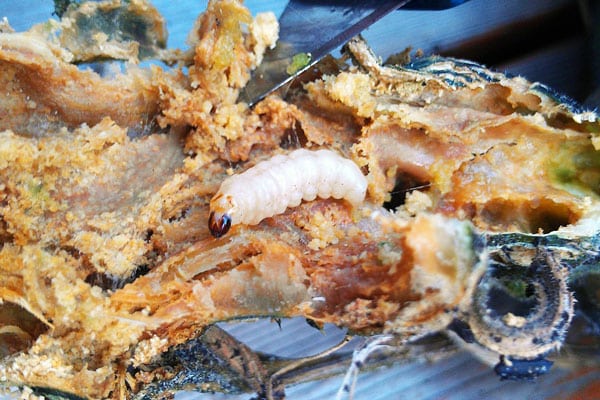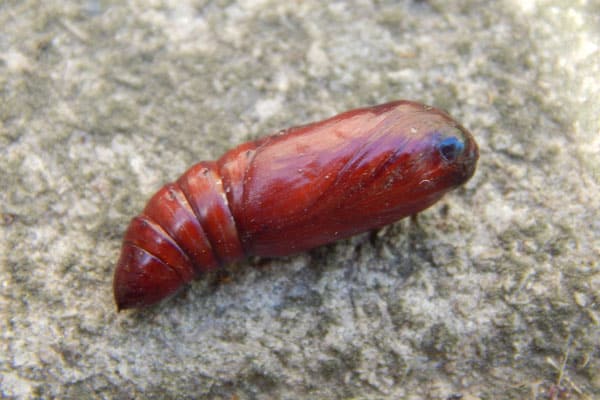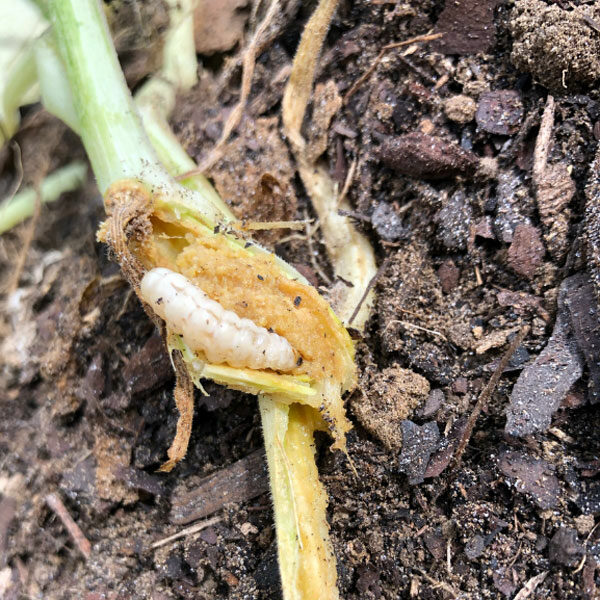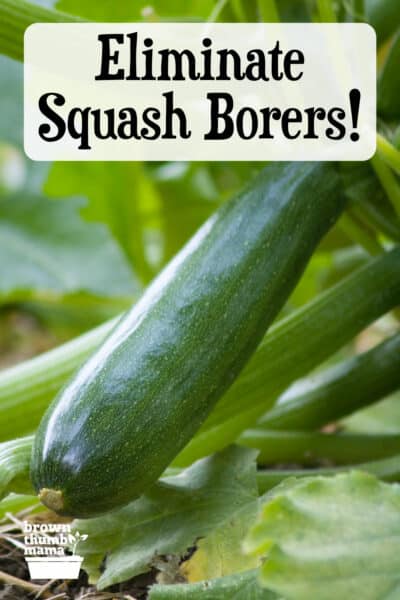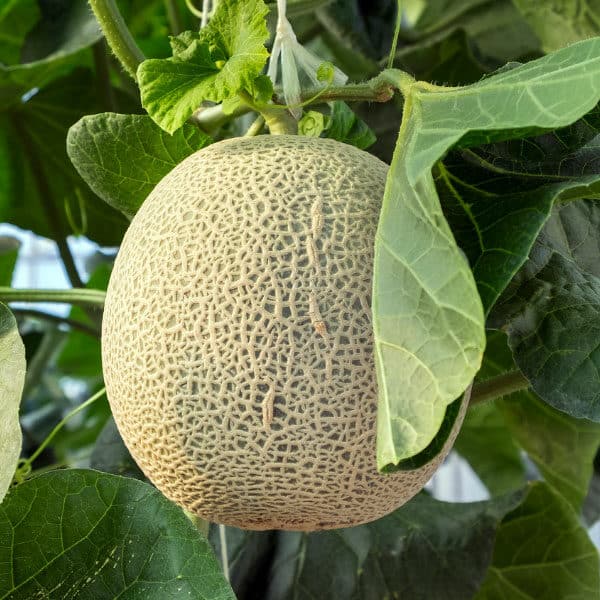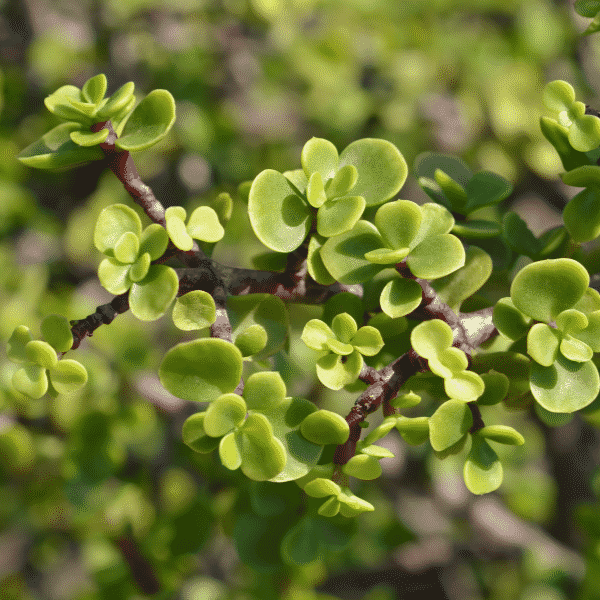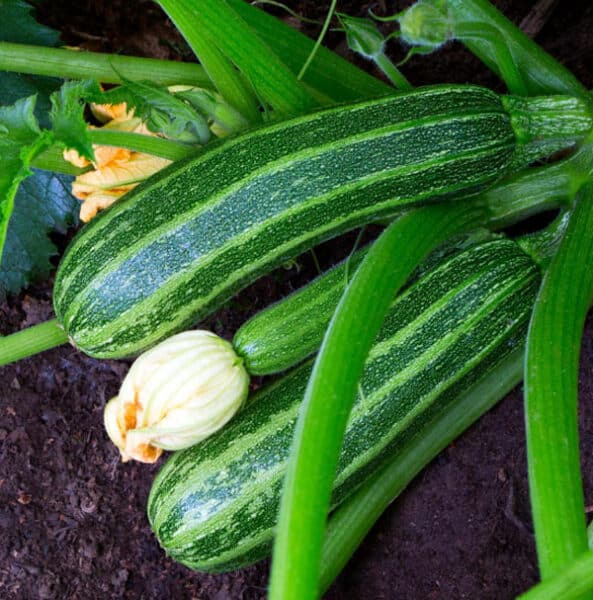This post may include affiliate links.
If you make a purchase, I'll earn a small fee at no extra cost to you.
Squash vine borers can ruin a good squash crop in the blink of an eye. You can prevent squash borers naturally, and these tips will help you keep your squash, pumpkins, and zucchini safe this growing season.
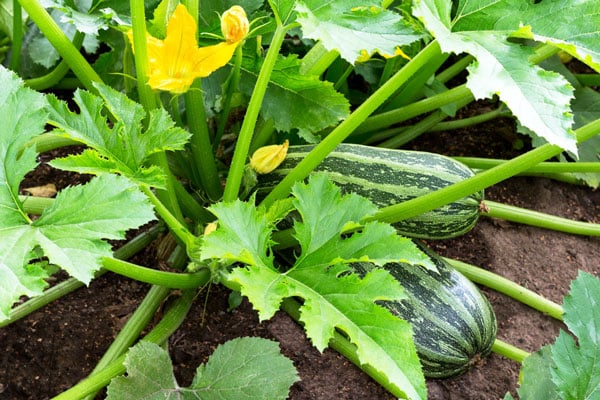
We love growing zucchini, spaghetti squash, and pumpkins in our garden. They’re easy to grow, don’t need a lot of care, and are delicious! But be aware: these veggies can be infested with a nasty garden pest called the squash vine borer. These insidious insects and their larvae can destroy crops several years in a row, unless you know how to prevent and eliminate them.
What is a Squash Borer?
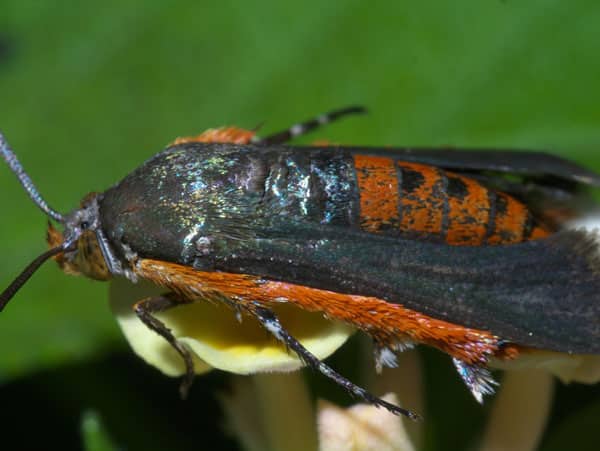
An adult squash borer is a moth with a black and bright orange body and greenish-black wings. But you have to look out for squash borer eggs and larvae too, because these are part of a squash borer infestation:
- Squash vine borer eggs look like tiny black or brown dots on the vines and stems of squash plants (there can be one, a few, or many on the same plant).
- Their larvae are white with dark heads and grow up to about half an inch long.
Note: A squash borer and a squash bug are two different garden pests. Adult squash bugs look like stink bugs and are not moths.
What Plants Do Squash Borers Eat?
By their name, I’m sure you can guess that squash borers like to eat a lot of squash. But interestingly enough, they don’t eat all types of squash.
Squash Borers Love to Eat:
Squash borers can also get into melons and cucumbers, but this is less common.
Squash Borers Don’t Like:
What Does Squash Borer Damage Look Like?
Squash borer larvae do the most damage on the stems of squash plants. They burrow into the stems (and sometimes the fruit) and eat them from the inside out. If you’re not performing frequent inspections, you might not notice the problem until it’s gotten pretty bad.
Typically, you’ll first notice your squash plants are wilting (even in the morning) and looking less robust. Fruit development might be slow or come to a halt. Soon enough, the borers will get through the stems and the damage will be obvious. But by then, they’ve been cutting off the supply of water and nutrients to your squash for some time.
Understanding the Life Cycle of a Squash Borer
To prevent a serious squash borer problem, it helps to understand where they come from, where they lay eggs, and how they develop.
Squash vine borer moths hatch from cocoons that overwinter in the soil. This means these destructive critters could be in your garden before you even start to plant! If you’re digging and find something that looks like this, squish it or feed it to your chickens.
Tilling the soil in the fall and spring can prevent infestations. Exposing the pupae and cocoons to the elements (and predators like birds) will get rid of them before they ever hatch.
After hatching out of the ground, adult squash borers lay eggs on the stems and vines of squash plants. Most of the eggs will be near the base of the main stem, usually scattered randomly in this area. The squash bug eggs hatch in a week, and then the destruction begins.
Squash vine borer larvae are the ones that cause all the damage. As soon as the larvae hatch from eggs, they bore into the stalks of squash plants and start eating like crazy. The more they grow, the more they eat – and the more damage they do.
Full-grown larvae or brown pupae (the next stage of development) then burrow in the ground where they wait out the winter in cocoons. They will hatch the following spring and start the cycle all over.
Preventing Squash Borers Naturally
Squash borers are icky and annoying pests that can ruin your squash crop in a flash. Luckily, you can get rid of squash borers naturally using a few time-tested methods. Keep in mind the most effective methods are going to prevent larvae from coming into contact with your plant. Once they’ve burrowed into the stalks, it’s much harder to get rid of these pests (though not impossible).
1. Cover Young Crops
When plants are young, use a very lightweight row cover to restrict access to the plants. If the adult squash borers can’t access the plants, they can’t lay their eggs, which will prevent infestations. Once the plants are established, follow the next tip.
2. Wrap Those Stems
This is an old-fashioned trick that still works like a charm. Once your squash plants have a few sturdy leaves, wrap the bottom 1-2 inches of the stalk’s base with aluminum foil, floral tape, or several layers of newspaper strips (getting them slightly damp can help them stick).
You’ll want a fairly snug wrap that extends just a little below the soil surface in order for this method to work effectively. Since the base of the stalk is where most squash borer eggs are laid, this can prevent an infestation before it gets started.
Check back every week or so to make sure the wrap doesn’t choke the stem. Loosen or replace the wrap as needed.
3. Use Sprays to Wash Away Eggs
If you do find some eggs on the stalks of your squash plants (they’re pretty easy to spot), you can get rid of them without too much effort. Use an all-natural, organic insecticidal spray to clean away the squash borer eggs. You can also use the natural insecticide Bacillus thuringiensis (or Bt), on the leaf stems and main stem of the plant (but not the flowers).
4. Diligently Check Your Squash Plants
At least twice a week, look carefully over your squash plants to check for eggs or any signs of larvae (like wilted leaves or “frass” – the sawdust-like droppings of larvae). If you find eggs, remove them immediately. If they’ve already hatched, check stems for damage or frass, then remove and destroy infected vines. You can carefully slit the stem of an infected plant with a clean knife and try to remove the larvae, but there’s no guarantee the plant will survive.
5. Till, Till, Till Away
Tilling is an important part of maintaining a healthy home garden and it works wonders for controlling squash borers too. Till thoroughly in the fall and again in the spring to help destroy the pupae and cocoons in the soil before your next planting.
6. Fool Them With a Trap Crop
Squash vine borer larvae love to eat Hubbard squash. Plant a few of these early in the season to attract the adult moths and encourage them to lay eggs. Then you can plant the squash plants you want to keep in another part of the garden. Be sure to check your “keeper” plants for squash vine borer damage just in case!
Note: Why Sprays Don’t Work Well for Squash Borers
My go-to natural pest control methods like neem oil and diatomaceous earth don’t do much against an infestation of squash borers. That’s because the borers don’t feed on the leaves like many pests – instead, they’re inside the stems (and sometimes fruit), where surface treatments don’t do much good.
Sometimes these methods might help prevent adults from laying eggs, but they don’t work in the conventional way we use topical treatments, so keep that in mind.


